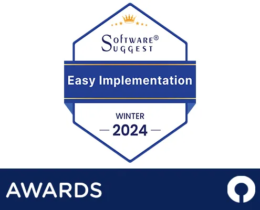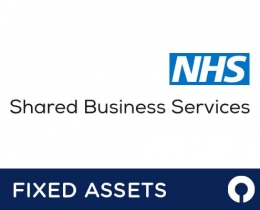How to Create a Preventive Maintenance Plan
Creating a preventive maintenance plan is essential for streamlined operations and minimised equipment downtime. Here’s how to do it.

Creating a preventive maintenance plan is essential for streamlined operations and minimised equipment downtime. Here’s how to do it.

In the world of asset management, preventive maintenance is a key strategy for optimising the performance and longevity of your equipment. By implementing a well-thought-out preventive maintenance plan, you can reduce maintenance costs, minimise downtime, and ensure the smooth operation of your business. In this article, we will provide you with a comprehensive guide on creating a preventive maintenance plan that helps you get the best performance from your critical assets.
Before we dive into creating a preventive maintenance plan, let’s quickly summarise the differences between preventive and reactive maintenance.
Preventive maintenance, also known as preventative maintenance, is a planned approach to maintaining equipment by performing regular inspections and servicing to identify and correct potential problems before they cause a failure. This can help to extend the life of equipment, reduce unplanned downtime, and improve overall reliability. Preventive maintenance is often scheduled based on factors such as the age of the equipment, the operating environment, and the manufacturer’s recommendations.
Some benefits of preventive maintenance programmes include:
Reactive maintenance is an approach to maintenance that involves waiting until an equipment failure occurs before taking action to repair it. This can lead to unplanned downtime, lost productivity, and safety hazards. Reactive maintenance is often used for equipment that is not critical to operations or that is not cost-effective to maintain preventively.
The best approach to maintenance will vary depending on the specific equipment, the operating environment, and the budget. In general, preventive maintenance is the preferred approach because it can help to prevent costly equipment failures and improve overall reliability. However, reactive maintenance may be necessary for some equipment or in some situations.
For a more detailed look at the pros and cons of both maintenance strategies, you can read our guide to preventive maintenance vs reactive maintenance.
Now, let’s dive into how to create your own preventive maintenance plan.
The first step is to identify the critical assets in your organisation. Critical assets are the backbone of your organisation’s operations. These are the assets that, if they were to fail, could lead to severe consequences, including safety hazards, production stoppages, or compromised patient care in healthcare settings. For example, in a manufacturing facility, critical assets might include specialised machinery that is vital for the production process. If a crucial machine breaks down, it can lead to costly production delays, leading to damaged sales and unhappy customers. For this reason, it’s essential that this machinery is prioritised in your preventive maintenance strategy.
To effectively maintain your assets, you need to know their current condition and how well they are performing. This assessment involves regular inspections, data collection, and analysis. Following on from the aforementioned manufacturing example, data collection for machines in manufacturing may include sensors on machines that can continuously monitor temperature, vibration, and other parameters. An increase in vibration levels may indicate a potential issue that needs attention. You may already be collecting extensive data on asset condition and performance; if you are not yet doing so, this may be a valuable way to boost the efficiency and reliability of your most important assets.
Not all assets are equally critical, and resources are finite. Prioritisation ensures that the most critical assets receive the attention they deserve. This might involve a risk-based approach, considering factors like asset importance and the consequences of failure. For example, in the energy sector, assets in power plants might be prioritised based on their contribution to overall capacity and grid stability.
Define the key objectives of your preventive maintenance plan. What do you aim to achieve with this plan? It’s important to ensure that your maintenance goals align with your broader business objectives. For example, in manufacturing, your goal might be to reduce machine downtime by 20% over the next year, leading to increased production efficiency. On the other hand, in healthcare, your objective could be to ensure that all medical equipment meets regulatory compliance, thus improving patient safety and reducing legal risks.
Establish key performance indicators (KPIs) to measure the success of your preventive maintenance plan. KPIs provide quantifiable metrics to track progress. The exact metrics you track will vary depending on the industry and the types of assets in your inventory; you might choose to track equipment uptime, number of equipment failures, or even customer satisfaction. Useful metrics include Overall Equipment Effectiveness (OEE), Mean Time Between Failures (MTBF), and Mean Time to Repair (MTTR).
Create detailed documentation of the maintenance requirements for each asset. This includes the specific tasks and procedures to be performed. Each asset may have unique maintenance requirements. In manufacturing, for example, a CNC machine may require regular lubrication, while a conveyor belt might need belt tension adjustments. The types of maintenance tasks can vary significantly within organisations – for example, an educational institution may require oil changes and tire maintenance on mini buses while also requiring lamp replacements for overhead projectors. For an effective preventive maintenance programme, documenting all these different needs is essential.
In preventive maintenance planning, outlining the frequency and tasks of maintenance activities is crucial to ensure that assets remain in optimal condition. The frequency and tasks should align with the asset’s specific needs and operational demands. For example, although a building’s elevators may be critical assets in the sense that they allow people to move around the building, it might not be realistic to carry out scheduled maintenance on them every month. Manufacturer guidelines often recommend maintenance at longer intervals, such as every three to six months.
Following on from the previous point, manufacturers often provide detailed maintenance guidelines for their equipment. These recommendations are based on extensive testing and engineering expertise, making them essential for maintaining asset reliability and safety. They are especially useful when planning preventive maintenance tasks for assets that are new to the organisation and therefore there is not yet any historic data about their frequency of breakdown or needing repairs.
A well-structured maintenance calendar is a cornerstone of any effective preventive maintenance plan. It ensures that maintenance activities are carried out efficiently and at appropriate intervals. By appropriate, we mean finding a balance between maintenance and operational needs – the disruption caused by the preventive maintenance schedule should be minimised as much as possible. In retail, for example, routine HVAC maintenance is often scheduled during periods of low customer traffic to reduce disruptions and prevent customer dissatisfaction.
Accountability is essential in preventive maintenance to ensure that tasks are completed efficiently and according to plan. As part of the preventive maintenance programme, you need to clearly define who is responsible for each maintenance task. Assign roles to maintenance technicians or teams to ensure accountability.
For example, in a transport and logistics organisation, responsibility for carrying out the planned maintenance may be spread among multiple people:
Implementing a robust equipment maintenance system is a pivotal aspect of an effective preventive maintenance plan. This system helps streamline maintenance activities, ensuring that assets are maintained efficiently. It’s important to choose suitable equipment maintenance software or tools that provide advanced reporting capabilities and real-time access to asset data as this can give a better indication of the success of your preventive maintenance strategy.
Continuously monitoring and tracking maintenance history and performance metrics is crucial for making data-driven decisions and optimising preventive maintenance plans. With high quality equipment maintenance software, you can gain visibility over asset performance and maintenance tasks. FMIS asset management software allows you to generate detailed reports and analyse data which helps maintenance managers optimise operations.
Regular performance reviews are a critical component of maintaining an effective preventive maintenance plan. These reviews involve assessing the plan’s success in improving asset efficiency and reducing maintenance costs. The KPIs we mentioned earlier are relevant here, but it’s important also to identify trends in the data – look for patterns, such as which machines are most prone to breakdowns and where maintenance costs are highest. A cost-benefit analysis can help you assess whether the maintenance plan has reduced overall maintenance costs and improved asset reliability. Comparing data across different locations or using industry benchmarks is also valuable at this stage.
Don’t be afraid to make adjustments and improvements to your preventive maintenance plan. After all, the readiness to make adjustments and improvements to the plan is an essential aspect of preventive maintenance. Adaptation to changing circumstances and technologies ensures the plan remains effective.
For example, this might include incorporating the latest sensor technologies and IoT capabilities into equipment to enhance predictive maintenance capabilities. It might include adjusting maintenance schedules based on equipment utilisation patterns and evolving production requirements. Moreover, it may be useful to establish feedback mechanisms where technicians can suggest improvements to maintenance procedures based on their real-world experiences.
Invest in the training of your maintenance technicians. Well-trained staff can execute maintenance tasks effectively and safely.
The new preventive maintenance plan may introduce new ways that staff receive work orders and new procedures for carrying them out, so it’s essential that everyone is trained in the new system. This allows the planned maintenance to go ahead smoothly and without a hitch. For example, maintenance technicians may need new equipment-specific training or safety training to boost effectiveness and workplace safety compliance.
Effective communication of the preventive maintenance plan to stakeholders is crucial for its success. This might include communicating:
Creating a culture of continuous improvement through feedback is a key element of a successful preventive maintenance plan. This approach involves actively seeking input from individuals involved in the maintenance process and using their feedback to refine and enhance the plan over time. For example, you might establish multiple channels for feedback, including regular team meetings, suggestion boxes, and an electronic feedback system accessible to all maintenance staff. Recognising and rewarding valuable suggestions is also key to encouraging team members to share their ideas.
In conclusion, a well-executed preventive maintenance plan is an important aspect of long-term success for any organisation. By assessing your assets, setting clear goals, developing comprehensive procedures, scheduling maintenance activities, implementing a tracking system, and fostering a culture of training and communication, you can reduce maintenance costs, minimise downtime, and ensure the reliable performance of your assets. Remember, preventive maintenance is an investment in your business’s future, and it pays off in increased efficiency, customer satisfaction, and overall success. So, take the first step today and start building your preventive maintenance plan to secure the future of your assets and your business.
Are you looking for powerful asset management software to help optimise maintenance schedules and measure the success of your preventive maintenance plans? FMIS software can help. With a full maintenance system for asset rich organisations, FMIS asset management software helps you automate tasks, boost efficiency, and gain visibility over the whole equipment maintenance process. Request a demo today to find out more.
For more information on how FMIS can help you effectively track and manage your assets and equipment, please get in touch with an FMIS consultant or call us on +44 (0) 1227 773003.




FMIS Ltd
167b John Wilson Business Park
Whitstable
Kent
CT5 3RA
United Kingdom
Phone:+44 (0) 1227 773003
Fax:+44 (0) 1227 773005
Sales:sales@fmis.co.uk
Support:support@fmis.co.uk

 FMIS Gets Cyber Essentials Plus Certification
FMIS Gets Cyber Essentials Plus Certification| Cookie | Duration | Description |
|---|---|---|
| cookielawinfo-checkbox-advertisement | 1 year | Set by the GDPR Cookie Consent plugin, this cookie is used to record the user consent for the cookies in the "Advertisement" category . |
| cookielawinfo-checkbox-analytics | 11 months | This cookie is set by GDPR Cookie Consent plugin. The cookie is used to store the user consent for the cookies in the category "Analytics". |
| cookielawinfo-checkbox-functional | 11 months | The cookie is set by GDPR cookie consent to record the user consent for the cookies in the category "Functional". |
| cookielawinfo-checkbox-necessary | 11 months | This cookie is set by GDPR Cookie Consent plugin. The cookies is used to store the user consent for the cookies in the category "Necessary". |
| cookielawinfo-checkbox-others | 11 months | This cookie is set by GDPR Cookie Consent plugin. The cookie is used to store the user consent for the cookies in the category "Other. |
| cookielawinfo-checkbox-performance | 11 months | This cookie is set by GDPR Cookie Consent plugin. The cookie is used to store the user consent for the cookies in the category "Performance". |
| CookieLawInfoConsent | 1 year | Records the default button state of the corresponding category & the status of CCPA. It works only in coordination with the primary cookie. |
| PHPSESSID | session | This cookie is native to PHP applications. The cookie is used to store and identify a users' unique session ID for the purpose of managing user session on the website. The cookie is a session cookies and is deleted when all the browser windows are closed. |
| viewed_cookie_policy | 11 months | The cookie is set by the GDPR Cookie Consent plugin and is used to store whether or not user has consented to the use of cookies. It does not store any personal data. |
| Cookie | Duration | Description |
|---|---|---|
| CONSENT | 2 years | YouTube sets this cookie via embedded youtube-videos and registers anonymous statistical data. |
| _ga | 2 years | The _ga cookie, installed by Google Analytics, calculates visitor, session and campaign data and also keeps track of site usage for the site's analytics report. The cookie stores information anonymously and assigns a randomly generated number to recognize unique visitors. |
| _gat_UA-48954022-1 | 1 minute | A variation of the _gat cookie set by Google Analytics and Google Tag Manager to allow website owners to track visitor behaviour and measure site performance. The pattern element in the name contains the unique identity number of the account or website it relates to. |
| _gid | 1 day | Installed by Google Analytics, _gid cookie stores information on how visitors use a website, while also creating an analytics report of the website's performance. Some of the data that are collected include the number of visitors, their source, and the pages they visit anonymously. |
| Cookie | Duration | Description |
|---|---|---|
| VISITOR_INFO1_LIVE | 5 months 27 days | A cookie set by YouTube to measure bandwidth that determines whether the user gets the new or old player interface. |
| YSC | session | YSC cookie is set by Youtube and is used to track the views of embedded videos on Youtube pages. |
| yt-remote-connected-devices | never | YouTube sets this cookie to store the video preferences of the user using embedded YouTube video. |
| yt-remote-device-id | never | YouTube sets this cookie to store the video preferences of the user using embedded YouTube video. |
